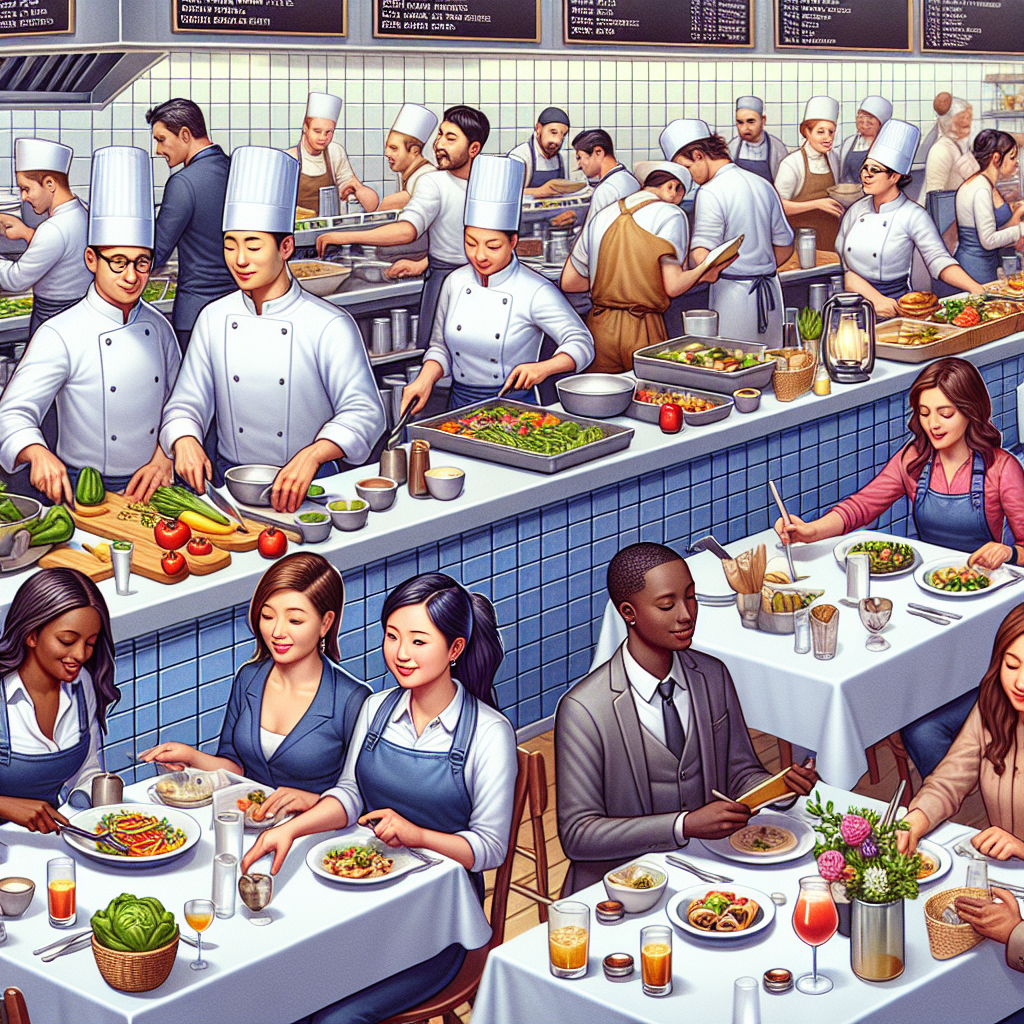Introduction
The restaurant industry is a competitive and ever-evolving landscape, with chains playing a significant role in shaping the market. In this report, we will delve into the intricacies of restaurant profit margins, focusing on how chains make money. We will explore the financials, market share, volumes, and future plans of various restaurant chains to provide a comprehensive understanding of the factors that contribute to their profitability.
Financials
One of the key indicators of a restaurant chain’s success is its financial performance. Profit margins are a crucial metric that reflects the chain’s ability to generate revenue and manage costs effectively. Let’s take a look at some financial data from leading restaurant chains:
– McDonald’s: In 2024, McDonald’s reported a net income of $6.03 billion, with a net profit margin of 25.4%. The chain’s revenue for the year was $23.6 billion, highlighting its strong financial performance.
– Starbucks: Starbucks reported a net income of $3.87 billion in 2024, with a net profit margin of 13.8%. The chain’s revenue for the year was $28.7 billion, showcasing its profitability despite facing challenges in the market.
– Chipotle: Chipotle reported a net income of $683 million in 2024, with a net profit margin of 9.5%. The chain’s revenue for the year was $7.18 billion, demonstrating its ability to maintain healthy profit margins.
These financial figures provide insights into how restaurant chains are able to generate profits and sustain their operations in a competitive market.
Market Share
Market share is another critical aspect that influences a restaurant chain’s profitability. By capturing a larger share of the market, chains can increase their revenue and expand their customer base. Let’s examine the market share of some prominent restaurant chains:
– McDonald’s: With over 38,000 locations worldwide, McDonald’s is one of the largest fast-food chains in the world. The chain’s market share is estimated to be around 17% globally, making it a dominant player in the industry.
– Subway: Subway is another major player in the restaurant industry, with over 41,000 locations worldwide. The chain’s market share is estimated to be around 6%, solidifying its position as a leading fast-casual dining option.
– Domino’s: Domino’s is a popular pizza chain with over 17,000 locations globally. The chain’s market share is estimated to be around 3%, showcasing its strong presence in the competitive pizza market.
These market share figures highlight the competitive landscape of the restaurant industry and the strategies that chains employ to gain a larger share of the market.
Volumes
Volumes play a crucial role in determining a restaurant chain’s profitability. By increasing sales volumes and managing operational costs efficiently, chains can improve their profit margins. Let’s explore the volumes of some successful restaurant chains:
– Chick-fil-A: Chick-fil-A is known for its high sales volumes, with an average unit volume of $4.1 million in 2024. The chain’s strong sales performance contributes to its profitability and expansion plans.
– Taco Bell: Taco Bell is a popular fast-food chain with an average unit volume of $1.6 million in 2024. The chain’s ability to attract customers and drive sales volumes has been key to its success in the market.
– Olive Garden: Olive Garden is a casual dining chain with an average unit volume of $4.2 million in 2024. The chain’s focus on customer experience and menu innovation has helped drive its sales volumes and profitability.
These volume figures illustrate how successful restaurant chains are able to achieve high sales volumes and generate profits in a competitive market.
Future Plans
Looking ahead, restaurant chains are constantly evolving and adapting to changing consumer preferences and market dynamics. Let’s explore some future plans of leading restaurant chains:
– McDonald’s: McDonald’s is focused on expanding its digital capabilities and enhancing the customer experience through technology. The chain is investing in delivery services, mobile ordering, and loyalty programs to drive sales and customer engagement.
– Starbucks: Starbucks is prioritizing sustainability and social responsibility in its future plans. The chain is committed to reducing its environmental impact, supporting coffee farmers, and fostering inclusivity in its stores.
– Chipotle: Chipotle is continuing to innovate its menu and enhance its digital ordering platforms. The chain is exploring new menu items, expanding its delivery and pickup options, and investing in technology to streamline operations.
These future plans demonstrate how restaurant chains are staying ahead of the curve and positioning themselves for long-term success in a competitive market.
In conclusion, restaurant profit margins are influenced by a variety of factors, including financial performance, market share, volumes, and future plans. By analyzing these factors, we can gain a deeper understanding of how chains make money and sustain their operations in a dynamic industry. As consumers continue to demand convenience, quality, and value from restaurants, chains must innovate and adapt to meet these evolving needs. By focusing on profitability and customer satisfaction, restaurant chains can thrive and grow in a competitive market.



